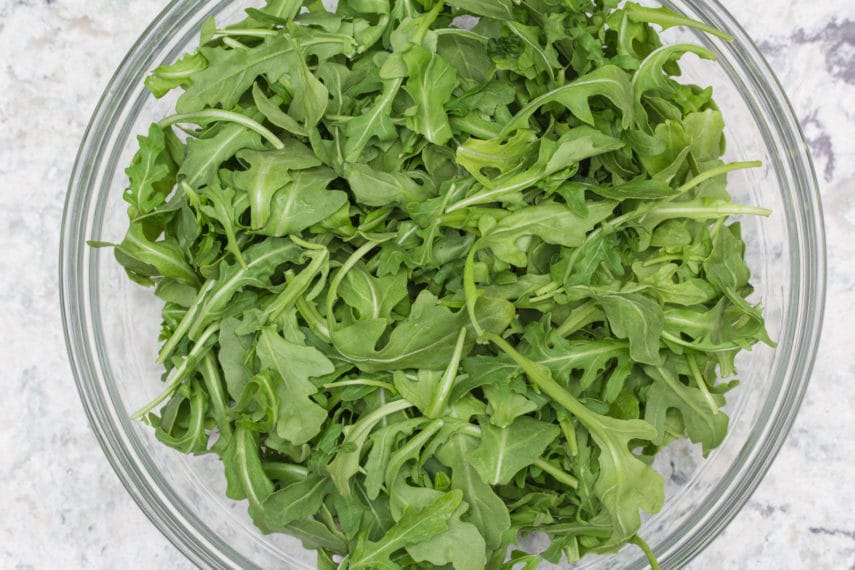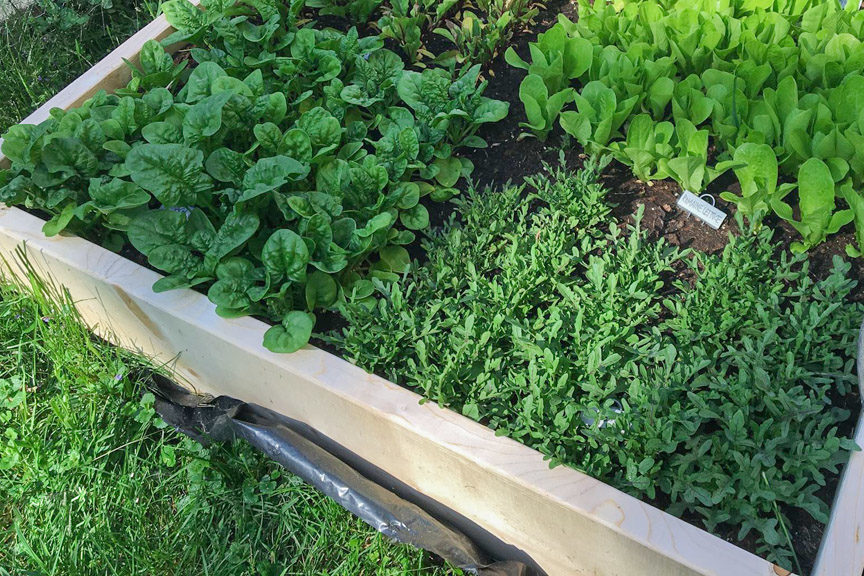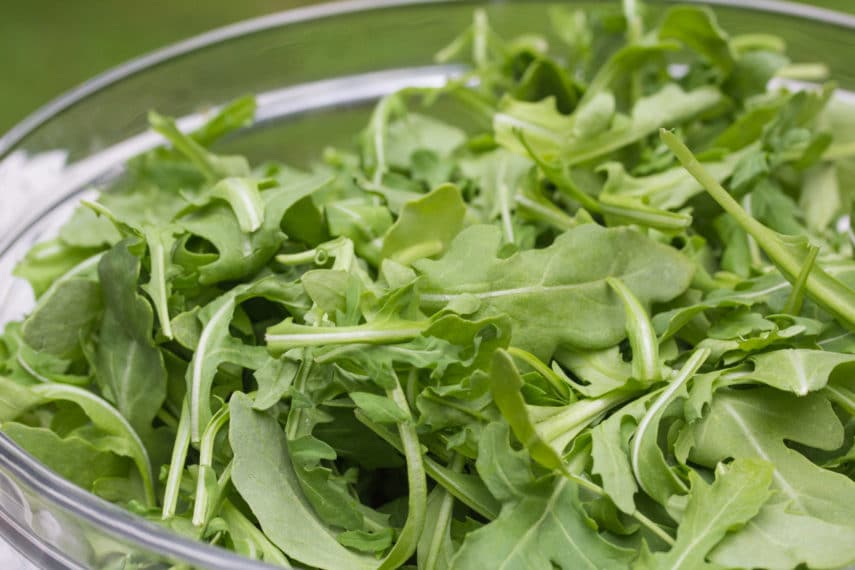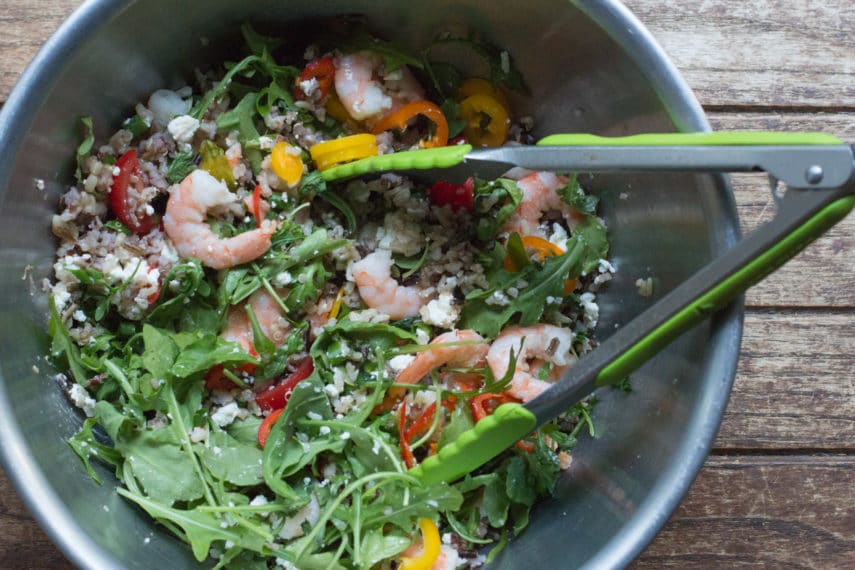Note: This post may include affiliate links. Please see our complete disclosure here.
About Arugula
Monash University suggested serving of arugula is 1 cup (35 g).
Note on Arugula: For years Monash had reported that arugula contained NO FODMAPs in lab testing. During a recent smartphone app update, the statement changed to “only trace amounts”. They still recommend to “eat freely and according to appetite”.
Eruca sativa – Arugula is a delightfully peppery green, sometimes referred to as rocket, roquette or less often, rugula or rucola. It is a Brassica family green that can be dated to ancient Rome being native to southern Europe and Western Asia and is now grown both in the U.S. and abroad. We particularly love it in salads but also reach for it as an alternative to baby spinach leaves in various cooking applications. See our Baked Penne with Greens and Tomatoes. Arugula is rich in iron and vitamins A and C.
How to Buy
Choose fresh-looking arugula with solid green color and a clean, fresh scent. Avoid any leaves that are spotted or wilted – they can get slimy and develop an unappealing odor. You might find arugula in bunches at farmer’s markets, pre-packed in packages (alone or sometimes with other greens in a mix) or occasionally in bulk.
Easy To Grow Your Own
Below you can see arugula growing on our Farm on the lower right, with Romaine lettuce behind it and spinach to the lower left. Robin loves arugula- and finds that the kind you can buy commercially is often milder- not as spicy- as she likes. So she grows three different types of arugula throughout the early summer and fall. If you have a patch of garden or some large pots in a sunny space you can give over to arugula we encourage you to do so! Here are some simple instructions. And Baker Seeds has some great varieties- look up arugula, wild rocket and arugula pronto.
How to Prep & Cook
The leaves should be washed and gently dried before using. Add to salads or highlight them all by themselves. Scatter on pizzas; use anywhere that calls for baby spinach for a more assertive taste. We like to add it to pasta water right before draining. Just a few seconds is enough to cook it and this is an instant way to add greens to your meal with no extra work.
How to Store
Store refrigerated in a plastic bag filled with air and securely closed. Store in the vegetable crisper and use soon after purchasing. Store away from contact with ethylene-producing fruits and vegetables such as bananas, peppers or tomatoes.
How to Use
Below you can see an impromptu use. We threw together raw arugula, cooked quinoa, cooked shrimp, feta cheese, some other veggies and dressed this grains and greens meal with vinaigrette.
Varieties
Arugula is generally broken down into salad types and wild types. Both are peppery with the wild types especially spicy. The salad types have a broader leaf and are more commonly found in conventional supermarkets. The wild types are lacy in structure and might be found at farmer’s markets – and certainly in seed catalogs. Try growing your own, if you are so inclined!





